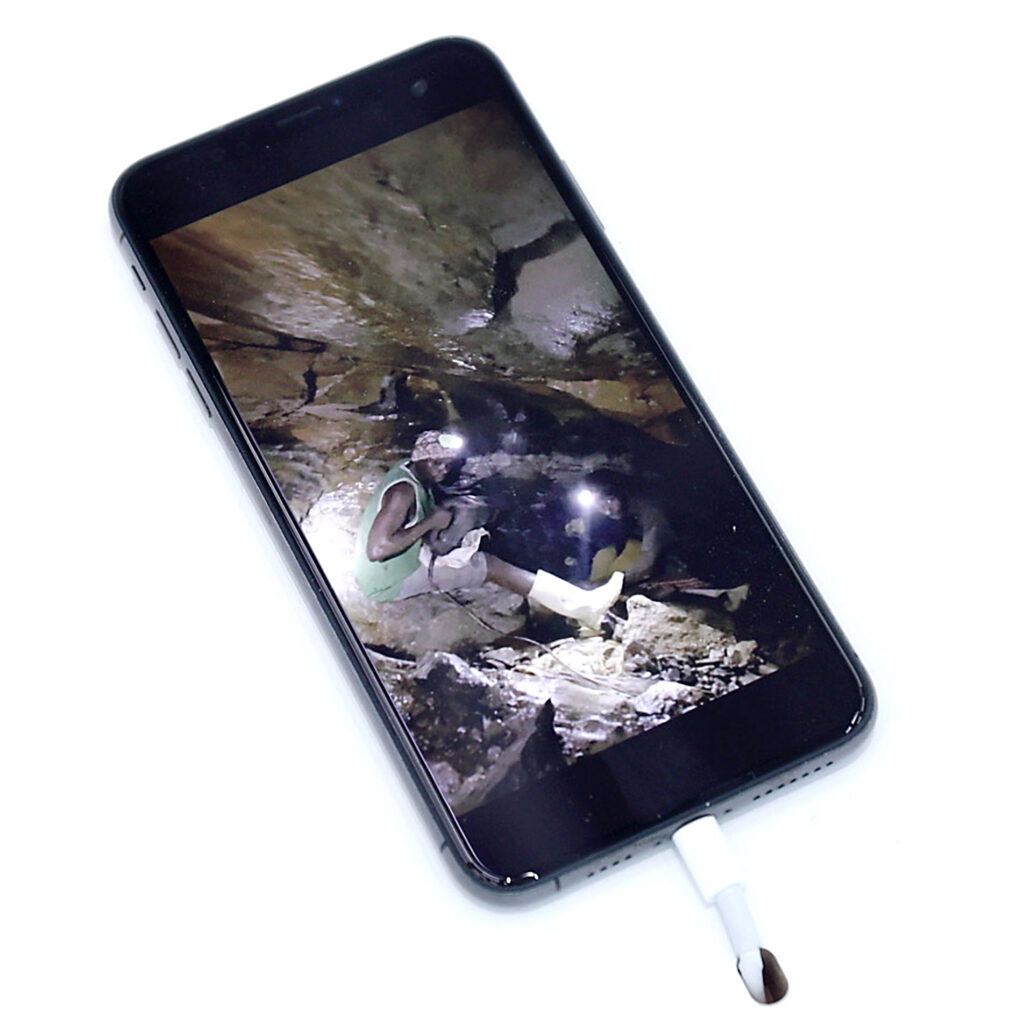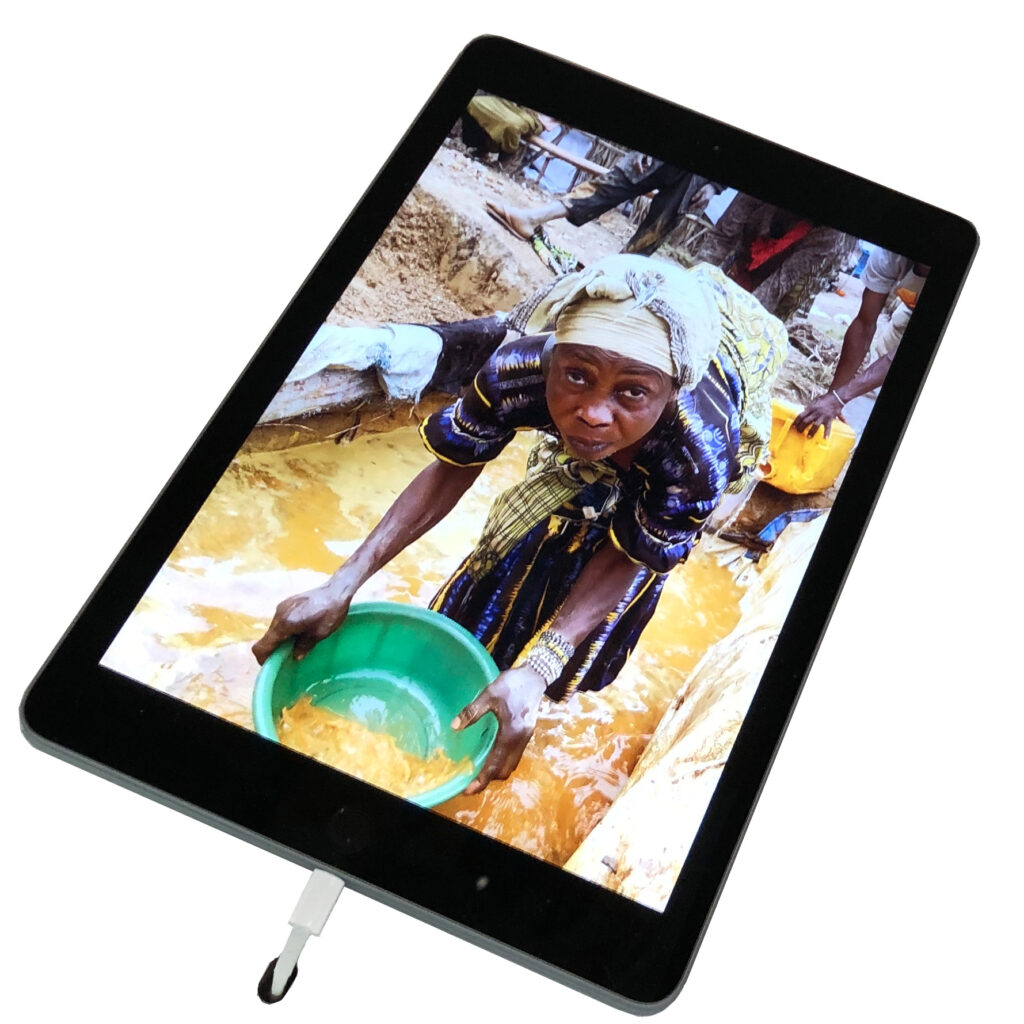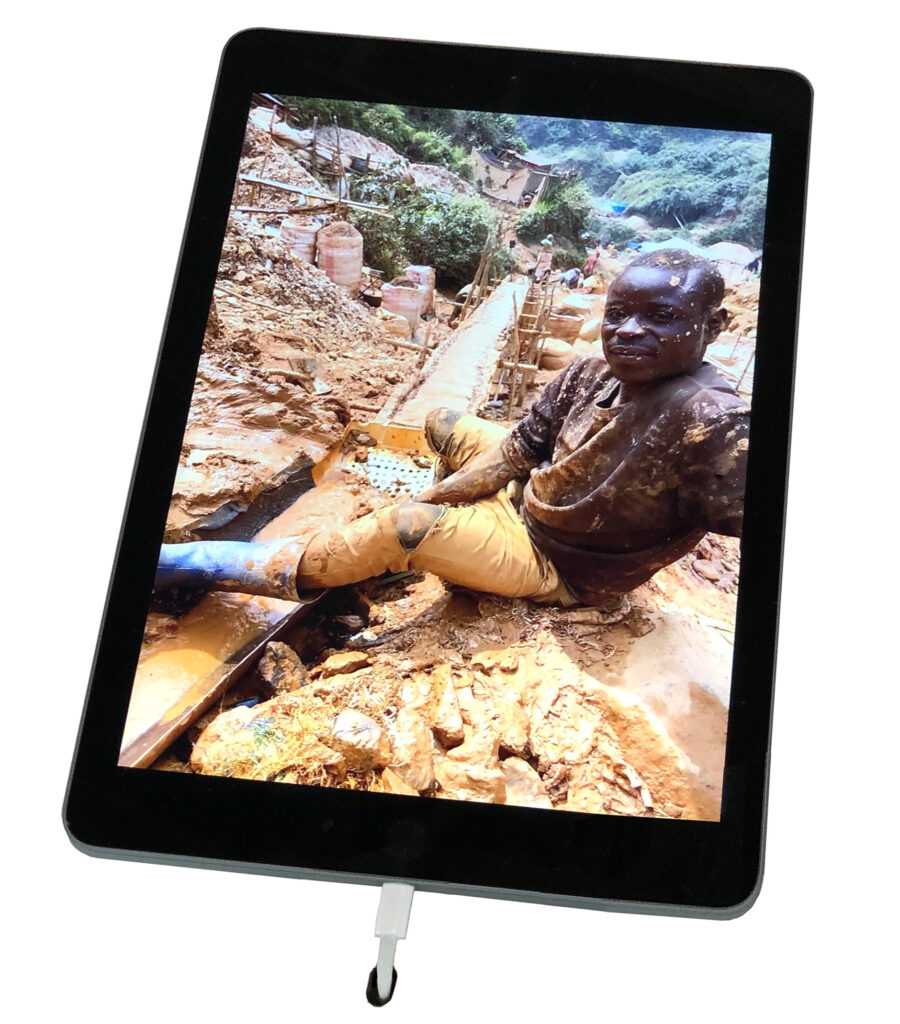Smartphones, tablets and computers do not work without the rare minerals used in their components and gold is one of these precious minerals. Indeed, about seven percent of global gold is used for technological purposes. Among these are (laptop) computers, cameras and smart phones. These devices make use of gold as a chemically stable and exceptional conductor for their electronic circuits.

Artisanal mining
Around eighty percent of the global labor force involved in gold mining is occupied in so-called artisanal or small-scale mining activities. That is a total of 45 million workers (30% women, 70% men) across 60 countries, mainly in the Southern hemisphere. In contrast, only twenty percent of the workforce are occupied in industrial mining. But eighty percent of the world’s production volume is generated in this segment.

Precarious situations
Despite their significant contributions to major global mineral supply chains, artisanal and small-scale miners are some of the world’s most marginalized workers and their contribution to the global economy garners little attention. Artisanal mining activity typically takes place in rural areas without access to proper health infrastructure and lack of government support.

Livelihoods for Millions
In spite of the high proportion of these workers and their families who live in extreme poverty and are being routinely exploited, artisanal mining also provides a livelihood for millions of people around the globe. It is estimated that at least 134 million people work in related industries that support artisanal and small-scale mining activities, including small-scale processing, buying and selling, but also restaurants and bars, shops, equipment, and transport facilities.
